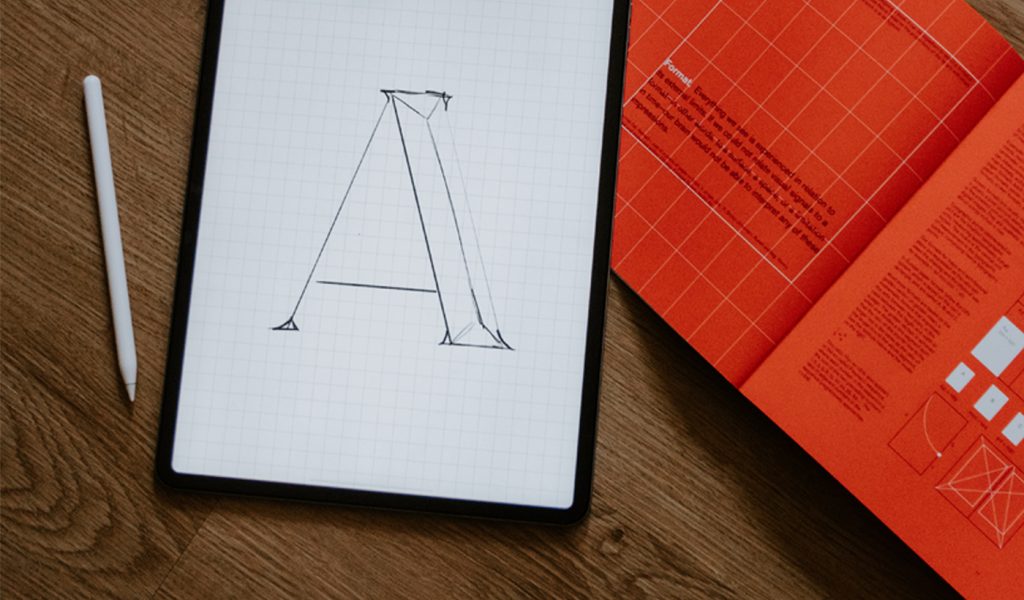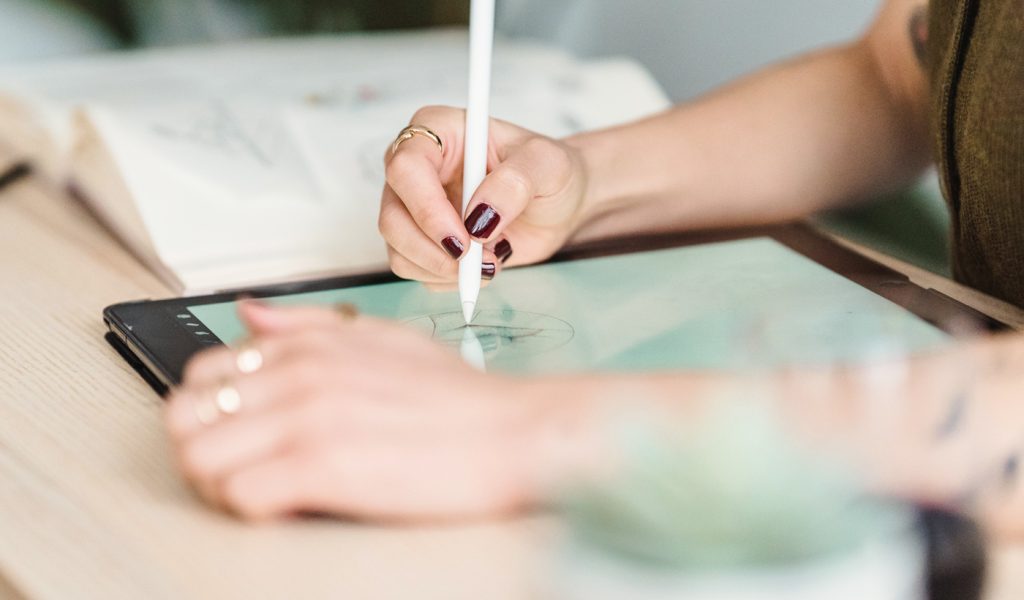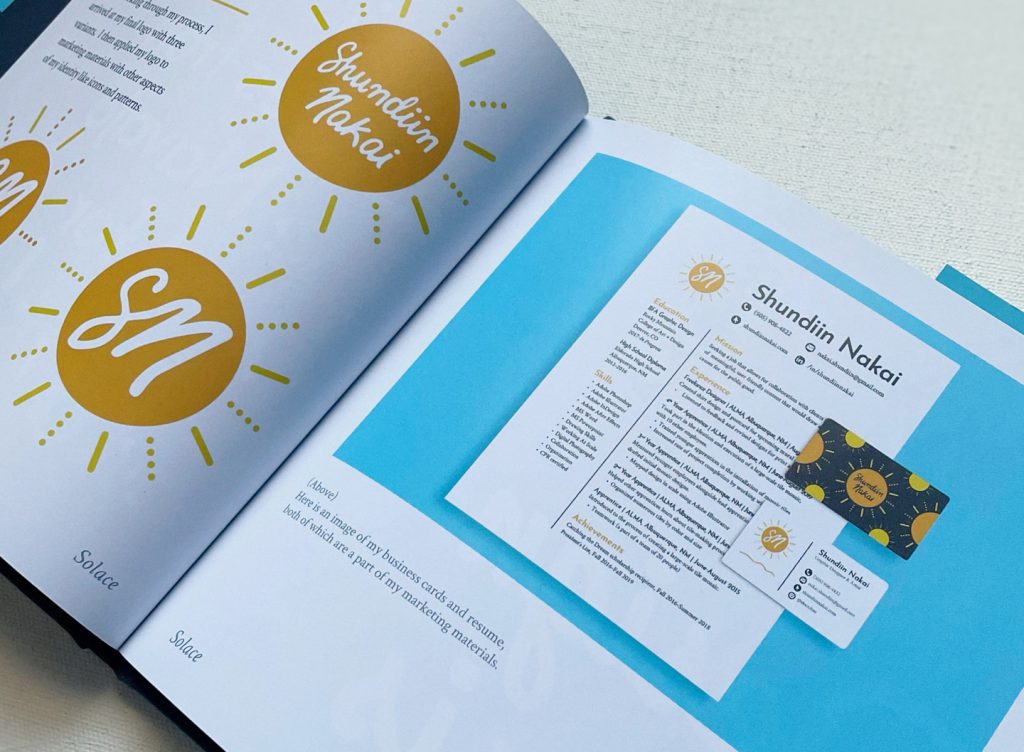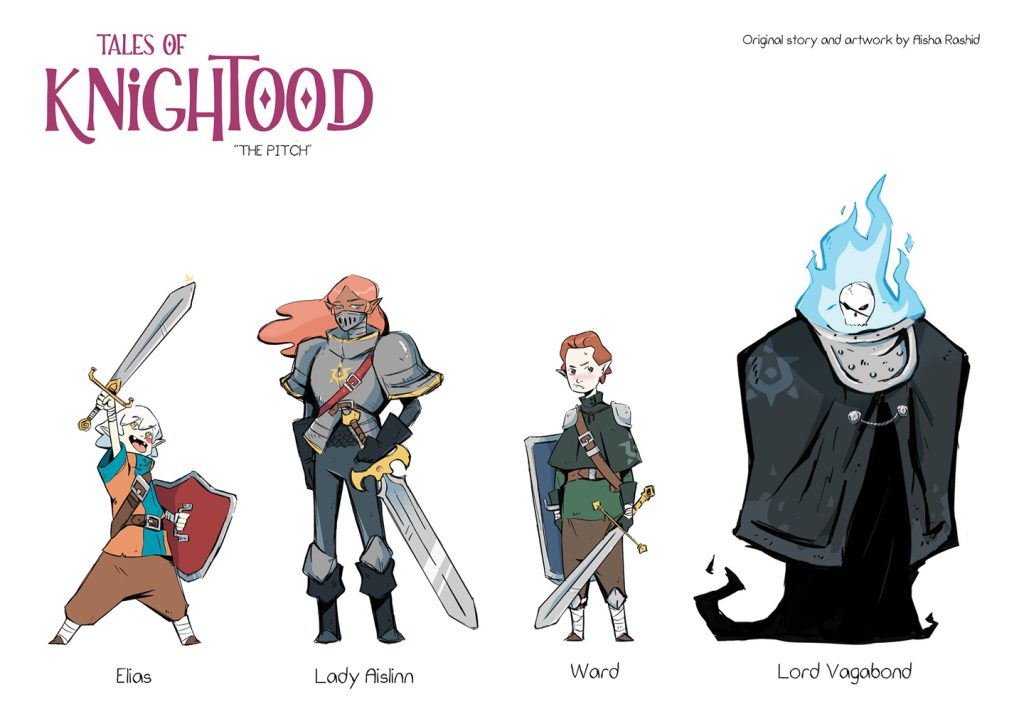How to make a graphic design portfolio
A well-curated graphic design portfolio is an essential asset to anyone working in the industry. For graphic designers and other creative professionals, the job market is highly competitive—especially with an increasing number of freelancers and contract-based workers. To make a lasting impression today, you have to stand out from the crowd.
Whether you’re fresh out of school looking for your first job or a seasoned pro with a decade of experience moving into a management role, your book is your chance to share your story, creativity, process, and skillset.
A compelling portfolio can open doors and create new opportunities to attract the perfect clients or land your dream job. But translating your ideas and design work into a tangible portfolio can be challenging. To help demystify the process, we share tips, ideas, and examples to help inspire the creation of your graphic design portfolio.
What’s a graphic design portfolio?
A graphic design portfolio is a curated collection of your design work that showcases your skills, achievements, and samples. Your book lets you showcase your talents and creativity to capture the attention of potential clients or employers actively looking for someone with your design skills. It is a powerful tool to illustrate what you can do and how you can impact an organization.
For your portfolio, consider creating a narrative about yourself as a designer, adding your experience, education, and qualifications. It should capture your skills and abilities, highlighting your unique design aesthetic and approach to visual arts. It’s your chance to tell a story about your projects and include elements like the creative brief, your process and influences, and the final results. Of course, organization and flow are essential to creating a cohesive book that engages your audience.
Why do I need a graphic design portfolio?
It doesn’t matter if you’re looking for entry-level jobs or an experienced freelancer; a graphic design portfolio is a must. Just like photographers, interior designers, and copywriters rely on portfolios to market their services, the same goes for graphic designers. Portfolios are a sales and marketing tool to promote yourself and your capabilities and prove your worth. Without one, you’ll likely be at a disadvantage when competing for opportunities, whether it’s employment or freelance gigs.
Prospective clients or employers will rely on your portfolio to decide whether to engage you for their design needs. So, as a graphic artist, it’s crucial to create a design portfolio that highlights your skills and demonstrates your ability to meet clients’ needs. You’ll likely need a digital portfolio for online applications or introductions, but sharing a physical version can help you stand out during in-person meetings.
What if I don’t have paid experience as a graphic designer?
No matter your experience level, a graphic design portfolio is an investment in your career. You don’t need to have a decade of work under your belt to create one. Start by defining your creative brand and focus on projects that illustrate your skills and showcase your capabilities. Some ideas include:
- Use your schoolwork. Leverage the artistry, knowledge, and skills you’ve acquired during classes and workshops and showcase them proudly to prove how capable a graphic designer you are.
- Dream up your own projects. You don’t have to be paid for a project to include it in your book. Do speculative work to demonstrate your potential—just be sure to label it as such!

Should it be digital or print?
The answer is both! To maximize reach, consider creating a digital version of your portfolio for applications and online presentations. However, nothing compares to the impact of having a physical book that clients or employers can flip through.
Plus, print is an opportunity to demonstrate the quality of your work and get creative with page design and layout.
How to build a graphic design portfolio: 8 tips
You might already know what design work you want to include in your portfolio. Follow these tips to help you build a graphic design portfolio that you can’t wait to send to hiring managers and future clients.
1. Gather inspiration
Treat your graphic design portfolio as you would any other piece of client work. How do you usually kick off a project, and what does your process look like? If you typically create a mood board with color swatches, example ideas, and inspiration, do the same for your portfolio.
Gathering inspiration and looking at other designers’ portfolio examples is a great place to start. This can give you an idea of the different portfolio styles, structural layouts, and underlying formats you like (or dislike). We’ve gathered a few favorites below to help you start.
2. Curate your work
Less is generally more when choosing which work to feature in your graphic design portfolio. Prioritize featuring your best work and the pieces most relevant to your target clients. So when pitching your illustration work or web design, you’ll need to show off those specific skills. We’d recommend spotlighting any design work you’ve done for high-profile brands, too, as name recognition impresses many hiring managers and recruiters.
While selecting which works to include in your portfolio, reflect on what type of work you want. Logos and brand identities? Or posters or album covers? Be sure your graphic design portfolio reflects this direction!
Remember that research reveals recruiters spend a mere three minutes on a portfolio, and managers invest as little as five. So select your top-notch work and toss the rest.
3. Develop your own brand
Your portfolio is a condensed snapshot of who you are professionally—so your skills, personality, and identity are important to put on display. Spend time on your brand and use it throughout your book. Think about how you want to portray yourself: Are you playful? Serious? Punk-rock? Get creative with colors, fonts, images, and other elements that express who you are as a designer.
In addition to a brand identity that feels true to you, consider the industries and types of clients you want to land. Lean into this niche to develop a distinct professional identity that will stand out from the crowd—and fit in. If you’re going after lawyers, you should play up the professional and down the yoga mom vibes. However, if you’re looking to get into package design for crunchy grocery stories, moving toward a natural look for your brand probably works better.

4. Organize cohesively
No matter how good your work is, potential clients may miss the point if it’s not organized and laid out well. Keep things simple and clean with a consistent navigation system throughout your book. Most portfolios start with an introduction page, a resume, and some background narrative, followed by a table of contents.
You might want to break your work down into formats like digital media, print, or consumer packaging. Or segment your samples based on output, like products, infographics, or brand identity. The topics are up to you, but keeping it cohesive and straightforward is key.
Once organized, craft a coherent flow that’s easy to navigate, scan, or flip through. Best practices include:
- Providing a sensible structure and table of contents
- Including page numbers and an index
- Using simple titles and naming
- Building your pages with a clean and uncluttered design
Our last note on organization: No matter how you arrange your samples, putting your most impressive work first is crucial. Some employers or clients will only glance past the initial few pages!
5. Provide context
There’s a lot to be said for letting your work speak for itself, but providing some written context will give your graphic design portfolio more depth. Engage your audience with a quick project background, your process, and the results. It’s smart to include details about the client, the intent, the tools you used to produce it, and its impact on the business.
Keep in mind the questions a prospective employer or client might ask: What skills does a particular piece of work demonstrate, how effectively did you go from brief to finished product, and which software or tools did you use?
Acknowledging these details gives prospective clients insight into your creative and professional skills, like your ability to actualize a creative brief, stick to deadlines, collaborate with other creatives, and—most importantly—communicate effectively.

6. Go behind-the-scenes
Consider including images that showcase your professional workflow and graphic design process. Behind-the-scenes glimpses into your initial research and inspiration gathering, initial design work, and transformation of those ideas into a finished product will give potential clients greater insight into you as a professional creative.
Breaking up the imagery of your final designs with sketches, color schemes, and wireframes can also help demonstrate your design process. Plus, it shows you understand what’s required to take a project from concept to completion. Seeing your methodology and approach to graphic design in action helps potential clients decide if your styles will align.
7. Lay out your portfolio
As a graphic designer, this is a given. Still, we’ll say it anyway: Crafting a consistent and visually stunning brand identity in your portfolio book is equally as critical as the content inside. A powerful, branded look will immediately draw attention to your work!
When laying out a book, visuals are usually our starting point. First, make sure they’re stunningly clear and high-resolution, ensuring each image stands apart on the page without any distractions or clutter.
Then, it’s time to add text to provide context beyond what the photos, sketches, and mockups can express. When it comes to typography, aim for easy-to-read fonts appropriate for the content. Make sure to include headings, subheadings, and bullet points to make your portfolio easier for viewers to digest.
Don’t forget to include a cover, table of contents, bio, and additional pages. Although these components may feature different page designs than your samples, as the first thing prospective clients and managers will see.
Pull everything together with a color palette and design style that matches your brand identity.
8. Keep it relevant
You are constantly learning and growing as a graphic designer. When adding projects to your portfolio, keep them recent and relevant. Ensure that the work you’re including demonstrates an understanding of current design trends, techniques, and technologies. This is a critical indicator that you can offer potential clients something new or innovative.
It’s important to review your portfolio regularly for out-of-date or irrelevant pieces. As your skills and portfolio projects evolve, so too should your book!

Tips for making a portfolio that impresses
Now that you know the steps to make a portfolio, take it up a notch with these tips for promoting yourself in book form!
- Quality, not quantity: Don’t overwhelm readers with too many projects. Instead, feature a few of your best works and provide detailed descriptions that explain the project’s purpose and process.
- Tailor your book for your audience: Many designers have multiple portfolios. If you plan to market your services to different clients, create separate books that target each.
- Edit your work: Before submitting your portfolio, ensure everything is thoroughly proofread and edited. Errors can distract and ruin the book’s overall look, so triple-check every page before you print it!
- Get feedback: Send your book to your mentor, colleague, or trusted friend. If you’re brave, you can even send it to designers you admire but don’t know. Feedback from others will help you strengthen your pitch. If you’re on the job hunt, ask hiring managers or recruiters for input. Many will offer suggestions on why you didn’t get the job—or why you did!
Graphic design portfolio ideas and examples
There are limitless ways to express creativity when building your graphic design portfolio. Your portfolio should be an extension of you as a graphic designer, so personalize it to your design style and niche. Here is a collection of graphic design portfolio ideas and examples to help fuel inspiration.
Shundiin Nakai
Shundiin Nakai, an Albuquerque-based creative and member of the Navajo Nation, created a print portfolio to showcase her work at the end of her graphic design program at Rocky Mountain College of Art and Design.
“I fell in love with the creative side of my book,” she states. “The personal aspect of this project, who I am and the type of work I want to do, was the hardest for me. The time spent on this book ultimately gave insight into how I find solace in creativity.” Explore Nakai’s book, Solace.

Aisha Rashid
Phoenix-based concept artist, character designer, and visual developer Aisha Rashid shows off her storytelling chops in her print portfolio. “My main goal is to be a part of and create art and stories that are more inclusive and reflect the world we live in,” she shares.
Blending short text and QR codes, each page displays a new character through sketches, explorations, and finished cover art. See Rashid’s portfolio.

Polina Kuban
With just three years of experience at the time of publishing, Polina Kuban’s freelance graphic design portfolio is an elegant example of simplicity, character, and competence. This proves your portfolio can be as simple as a link to a PDF.
Her personality shines through from the very beginning, and the layout of her design samples is clean and minimalist-modern. View Kuban’s full portfolio.
Malika Favre
The unique design aesthetic of Malika Favre speaks volumes with few words on her website portfolio of digital graphic design work.
With work examples featuring brands like Warby Parker, The New York Times, and National Geographic, Favre showcases her impressive experience and reputation with an easy-to-navigate, personalized website that features each project as an enticing thumbnail. Experience Favre’s complete portfolio.
Check out graphic design books on the Blurb Bookstore for even more inspiration.
Get started making your graphic design portfolio
There is no shortage of ways to build a stand-out graphic design portfolio. You can make a website or PDF, a tangible version like a hardcopy book, a zine to leave behind, and so much more.
With these simple steps and examples to guide you, you’ll be on your way to creating an graphic design portfolio that showcases your talent and sets you up for success. You’ve got this!
***
Blurb can help streamline creating and printing your portfolio. Integrating with Adobe InDesign, Blurb easily translates your projects into a stunning layout. Then, when you’re ready to print, you can utilize print-on-demand services to make as many books as needed precisely when you need them.


This post doesn't have any comment. Be the first one!